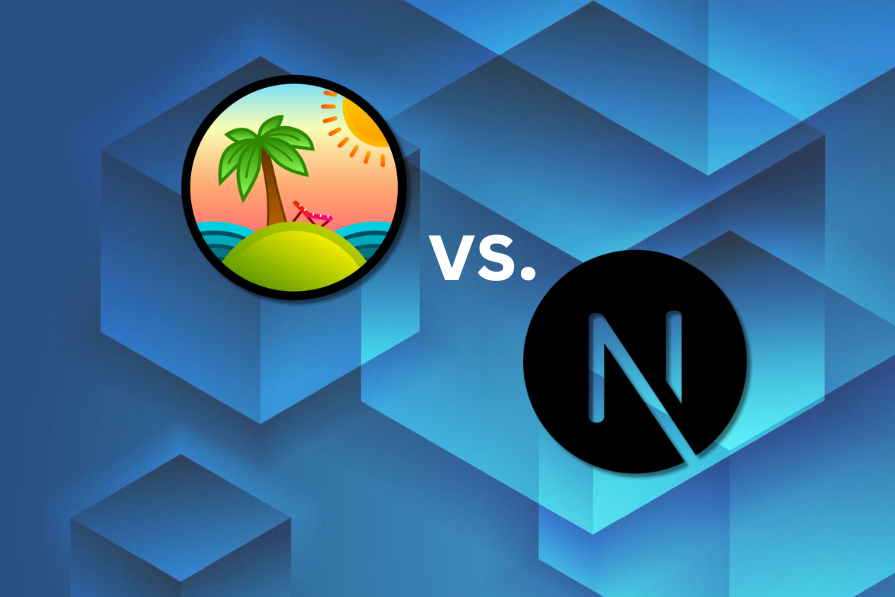✍️ Author: Next
📅 Date: 30 Jul 2025
🏷️ Category: Tech
The React ecosystem is constantly evolving, with new libraries and frameworks pushing the boundaries of performance, flexibility, and developer experience. For years, Next.js has been the go-to choice for building full-stack React applications, thanks to its server-first approach, built-in support for server-side rendering (SSR), static site generation (SSG), and intuitive file-based routing.

But recently, new contenders have entered the scene, one of the most notable being TanStack Start. Built by the team behind widely-used tools like TanStack Query, TanStack Router, and TanStack Table, this new framework offers a fresh take on full-stack React development.
TanStack Start brings a fresh perspective to full-stack React development. It embraces a client-first architecture, yet still supports powerful capabilities like full-document server-side rendering (SSR), streaming, and server functions. If you’re looking to move away from boilerplate-heavy workflows and want type-safe routing, smarter data fetching, and the flexibility to structure your app your way, TanStack Start might be exactly what you need.
In this article, we’ll explore a detailed comparison between TanStack Start and Next.js, breaking down their core architectures, routing strategies, data-fetching approaches, performance optimizations, and more. Whether you’re building a highly dynamic single-page app or a content-heavy website, understanding the strengths and trade-offs of each framework will help you make a more informed choice.
Every framework is shaped by a foundational set of features that define its architecture, development experience, and overall capabilities. To better understand what TanStack Start and Next.js offer, it helps to compare their core features side by side and highlight how they differ in philosophy and functionality.
Here’s a quick summary of the key differences between the two frameworks:
| Feature | Next.js | TanStack Start |
|---|---|---|
| Core architecture | Server-first with SSR, SSG, ISR by default | Client-first SPA by default |
| Routing | File-based routing system | Both file-based and code-based routing |
| Data fetching | Supports SSG/SSR methods, client Hooks | Uses isomorphic loaders, built-in Query |
| TypeScript and developer experience | TypeScript compatible | TypeScript native |
| Performance optimization | Built-in optimizations | Manual control |
| Build and deployment | Zero-config with Turbopack | Configurable with Vite and Nitro |
| Best use cases | Ideal for content-rich websites, e-commerce platforms, and enterprise applications that benefit from built-in rendering strategies like SSG/SSR/ISR and seamless deployment on Vercel | Suited for highly interactive, data-driven applications such as dashboards and internal tools |
Next.js embraces a server-first architecture aimed at optimizing performance and delivering a seamless user experience. It emphasizes server-side rendering (SSR), static site generation (SSG), and incremental static regeneration (ISR), enabling full or partial pre-rendering of pages on the server. This approach results in faster initial page loads, improved SEO, and smaller client-side bundles.
With the introduction of the App Router, Next.js now incorporates React Server Components (RSC) and server actions, allowing developers to more efficiently blend client and server logic.
In contrast, TanStack Start takes a client-first approach, treating applications as single-page apps (SPAs) by default. This enables faster route transitions and rich client-side interactivity. That said, it doesn’t compromise on server-side capabilities, instead, it supports full-document SSR, streaming, and server functions powered by tools like Vite and Nitro.
At the heart of TanStack Start’s architecture is TanStack Router, a fully type-safe, enterprise-grade routing system. While the client stays in control, developers can progressively opt into SSR and SSG as needed, making TanStack Start a highly flexible, modern full-stack solution.
Next.js uses a file-system-based routing system. The structure of the pages or app directory directly maps to your application’s routes. For example, creating a file at pages/about.js automatically sets up a route at /about. Nested routes are created by organizing folders hierarchically; pages/blog/post.js corresponds to the /blog/post route.
This approach simplifies routing, especially for developers who prefer a convention-over-configuration paradigm. It eliminates the need for explicit route declarations and speeds up development. However, in complex applications that require advanced dynamic routing or more customizable behavior, this system can become limiting. Because route definitions are tied to the file system, flexibility may suffer in highly dynamic use cases.
TanStack Start, on the other hand, uses TanStack Router, a fully type-safe routing solution that supports both file-based and code-based routing, providing significantly more flexibility.